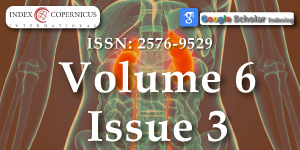Medical mystery: Deposition of calcium oxalate and phosphate stones in soft tissues
Main Article Content
Abstract
Calcinosis cutis (CC) [1] is an unusual disorder characterized by calcium-phosphate deposition into cutaneous and subcutaneous tissues. There are five subtypes: dystrophic, metastatic, idiopathic, iatrogenic and calciphylaxis.
Calciphylaxis or calcifying panniculitis is defined as small vessel calcification mainly affecting blood vessels of the dermis and subcutaneous fat. Despite the predominance of cases in patients with ESRD, calciphylaxis can also be found in patients with normal renal function and normal levels of calcium and phosphate. These cases are often referred to as nonuremic calciphylaxis (NUC), a heterogeneous category with several associations. Literature reveals an association with hyperparathyroidism (28%), malignancy (22%), alcoholic liver disease (17%) and connective tissue diseases (11%) while obesity, liver disease, high-serum calcium (Ca) × phosphorus (P) levels, combined therapies of calcium salts with vitamin D, warfarin and corticosteroids have been observed to increase the likelihood of this disease [2]. The lesions in both nonuremic and uremic calciphylaxis tend to be indistinguishable from each other, initially presenting as tender subcutaneous plaques that progress into nonhealing ulcers with overlying black eschar. Skin changes often begin with a livedo reticularis pattern that can progress to livedo racemes and ultimately retiform purpura.
In our clinical case, we describe a patient with multiple risk factors for calciphylaxis, intense widespread calcification (vessels, tendons, joints) and cutaneous calcific stone of calcium and phosphate oxalate not elsewhere described before.
Article Details
Copyright (c) 2022 Capitanini A, et al.

This work is licensed under a Creative Commons Attribution 4.0 International License.
Skidmore RA, Davis DA, Woosley JT, McCauliffe DP. Massive dystrophic calcinosis cutis secondary to chronic needle trauma. Cutis. 1997 Nov;60(5):259-62. PMID: 9403246.
Nigwekar SU, Wolf M, Sterns RH, Hix JK. Calciphylaxis from nonuremic causes: a systematic review. Clin J Am Soc Nephrol. 2008 Jul;3(4):1139-43. doi: 10.2215/CJN.00530108. Epub 2008 Apr 16. PMID: 18417747; PMCID: PMC2440281.
Weenig RH, Sewell LD, Davis MD, McCarthy JT, Pittelkow MR. Calciphylaxis: natural history, risk factor analysis, and outcome. J Am Acad Dermatol. 2007 Apr;56(4):569-79. doi: 10.1016/j.jaad.2006.08.065. Epub 2006 Dec 1. PMID: 17141359.
DEGAETANI GF. HANS SELYE'S CALCIPHYLAXIS. Panminerva Med. 1963 Dec;5:401-4. PMID: 14099194.
Bhat S, Hegde S, Bellovich K, El-Ghoroury M. Complete resolution of calciphylaxis after kidney transplantation. Am J Kidney Dis. 2013 Jul;62(1):132-4. doi: 10.1053/j.ajkd.2012.12.029. Epub 2013 Feb 20. PMID: 23433466.
Huang L, Xu J, Kumta SM, Zheng MH. Gene expression of glucocorticoid receptor alpha and beta in giant cell tumour of bone: evidence of glucocorticoid-stimulated osteoclastogenesis by stromal-like tumour cells. Mol Cell Endocrinol. 2001 Jul 5;181(1-2):199-206. doi: 10.1016/s0303-7207(01)00486-5. PMID: 11476953.
Ma YL, Cain RL, Halladay DL, Yang X, Zeng Q, Miles RR, Chandrasekhar S, Martin TJ, Onyia JE. Catabolic effects of continuous human PTH (1--38) in vivo is associated with sustained stimulation of RANKL and inhibition of osteoprotegerin and gene-associated bone formation. Endocrinology. 2001 Sep;142(9):4047-54. doi: 10.1210/endo.142.9.8356. PMID: 11517184.
Huang L, Xu J, Kumta SM, Zheng MH. Gene expression of glucocorticoid receptor alpha and beta in giant cell tumour of bone: evidence of glucocorticoid-stimulated osteoclastogenesis by stromal-like tumour cells. Mol Cell Endocrinol. 2001 Jul 5;181(1-2):199-206. doi: 10.1016/s0303-7207(01)00486-5. PMID: 11476953.
Ma YL, Cain RL, Halladay DL, Yang X, Zeng Q, Miles RR, Chandrasekhar S, Martin TJ, Onyia JE. Catabolic effects of continuous human PTH (1--38) in vivo is associated with sustained stimulation of RANKL and inhibition of osteoprotegerin and gene-associated bone formation. Endocrinology. 2001 Sep;142(9):4047-54. doi: 10.1210/endo.142.9.8356. PMID: 11517184.
Chander S, Gordon P. Soft tissue and subcutaneous calcification in connective tissue diseases. Curr Opin Rheumatol. 2012 Mar;24(2):158-64. doi: 10.1097/BOR.0b013e32834ff5cd. PMID: 22227955.
Pyle HJ, Rutherford A, Vandergriff T, Rodriguez ST, Shastri S, Dominguez AR. Cutaneous oxalosis mimicking calcinosis cutis in a patient on peritoneal dialysis. JAAD Case Rep. 2021 Oct 5;17:73-76. doi: 10.1016/j.jdcr.2021.09.036. PMID: 34712761; PMCID: PMC8529075.

